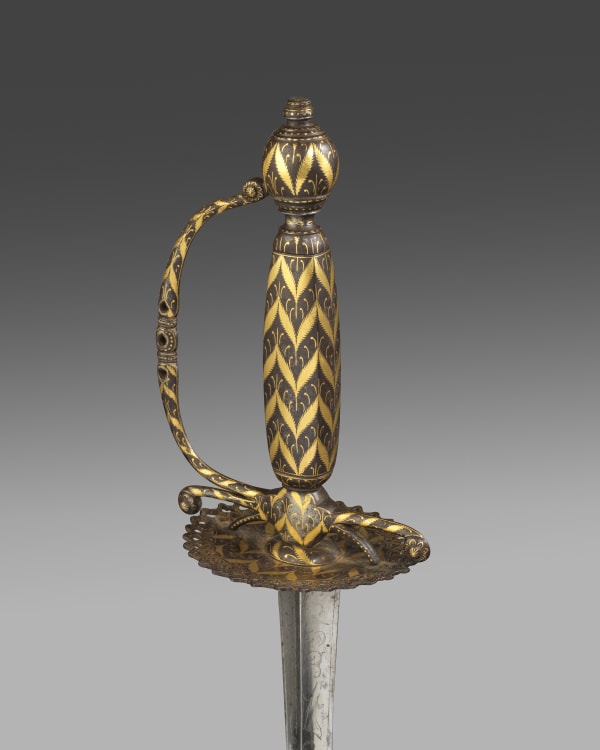-

-
Group of Four Small Swords
A small-sword is a light one-handed sword which evolved out of the longer and heavier rapier of the late Renaissance. This edged weapon would have been carried by aristocrats and high-ranking officials as part of their fashionable attire in Britain and India throughout the 18th century.
The hilts in our group were made in workshops in Northern India, probably close to East India Company factories around Lucknow and Murshidabad. The hilts’ shapes are European, but the koftagari work, a technique by which steel is inlaid with gold, is Indian. The actual inlay is reminiscent of Mughal decoration of the period and sometimes Neo-classical design, which would have been pleasing to the European eye.
-
-
Small-swords with hilts made in India do not seem to be particularly numerous or widely published, but neither are they unknown or unrepresented. The Royal Armouries in Leeds has at least one example (Inv. IX137), so has the Victoria & Albert Museum (Inv. 1723-1888) and the Metropolitan Museum (Inv. 26.145.337).
This group gets an early mention in Bashford Dean’s 1929 publication, although he calls the small-sword illustrated Russian, 1790 (?) (Dean 1929, no. 95, pl. LXXII). Claude Blair, one of the foremost authorities on historic European metalwork, especially arms and armour, also wrote about this group in his 1962 publication. Both the V&A small-sword and the RA examples are included and he describes them as follows (Blair 1962, p. 86):’151, 152
Hilts decorated in this way were once called Russian, presumably because the designs often include domed buildings resembling the Kremlin! In fact, the decoration is closely paralleled on many swords and daggers from Northern India and there can be little doubt that these hilts were made in one of the European factories there, probably one of those run by the East India Company.’ Blair also mentions them in a slightly different context on
p.76 where he talks about the inlaid decoration of metal: ‘The gold and silver decoration found on many sixteenth- and seventeenth-century sword-hilts and gun-barrels may in a few instances be inlaid, but on the vast majority of examples it is ‘counterfeit’ damascening... The only important exceptions are the steel small-sword hilts inlaid with designs in gold made in India for the European market during the third quarter of the
eighteenth century.’




